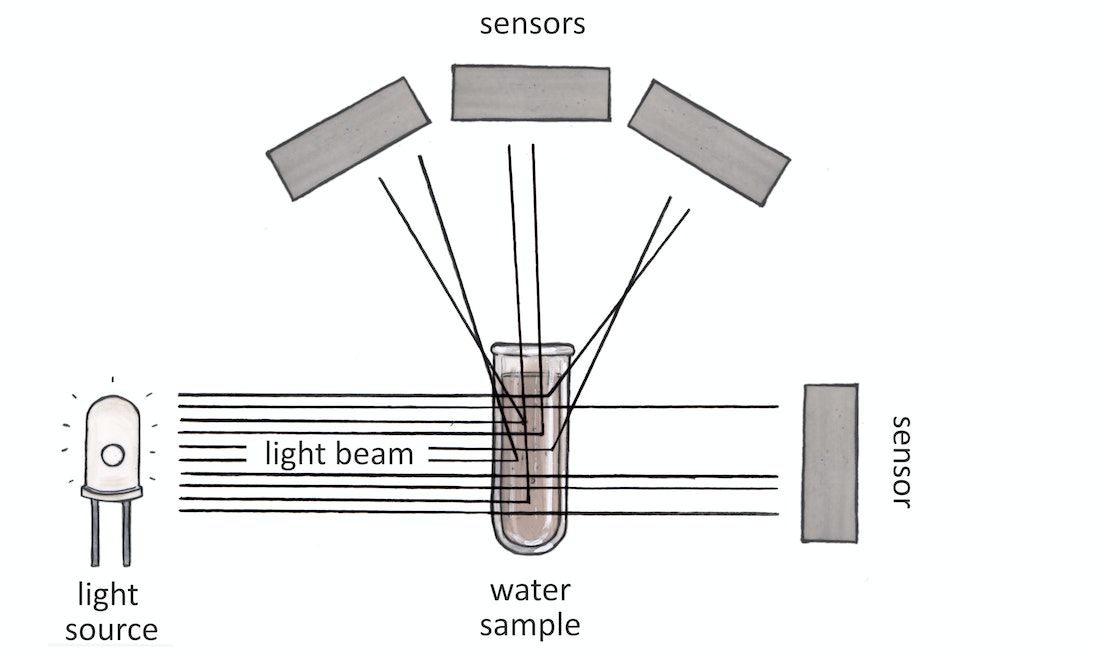Turbidity can vary widely between each river and lake, and also over time. For this reason, most government guidelines provide a maximum allowed increase from normal background levels for each water body. Turbidity values less than 10 NTU are considered low, a value of 50 NTU would be considered moderately turbid, and very high turbidity values can be more than 100 NTU.
What is it?
Turbidity is a measure of water clarity. It describes the amount of light scattered or blocked by particles floating in the water. These particles cause the water to look cloudy or murky. In rivers and lakes, these particles can come from algae and other plant material, soils, silt and clay, and other substances in the water like salts, minerals and metals.
Increased turbidity in lakes and rivers can be caused by heavy rains that wash soil and other materials into the water, erosion, snowmelt, windstorms, or fires. It can also be caused by activities such as logging, mining, agriculture, or dredging.

Seasonal factors
Turbidity can vary throughout the seasons. For example, large rivers can be very low in turbidity during the winter below the ice, but turbidity usually increases dramatically during snowmelt when water carries soil off the land into rivers and streams. Lakes can also become more turbid in the summer as algae and small animals (e.g., zooplankton) grow quickly and increase their activity.
Why does it matter?
High turbidity can have negative impacts on fish and other aquatic life. Algae and other aquatic plants need light to grow and high turbidity will decrease underwater light availability.
If there is a lot of floating algae in a lake, this can block out light that other plants need to grow. High turbidity due to algae can also affect fish because when large amounts of algae die, oxygen is used up to decompose them, leaving less oxygen for the fish.
High turbidity can also make it difficult for fish to see and catch prey. Large amounts of suspended soils or clay may clog the gills of fish and bury and kill fish eggs. Pollutants and harmful bacteria may also be attached to particles that cause turbidity.
How is it measured?
Turbidity is best measured on site directly in the water but can also be measured in a sample sent to the lab. A turbidity sensor shines light into the water and measures how quickly that light is scattered by particles in the water. The results are reported in units called Nephelometric Turbidity Units (NTU).
Turbidity may also be measured using slightly different methods and units, such as Formazin Turbidity Units (FTU).

Related to turbidity: Secchi depth, water clarity.
Turbidity is influenced by: chlorophyll, total suspended solids (TSS), water colour.